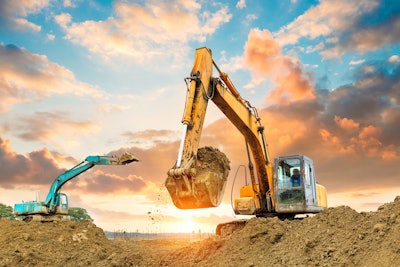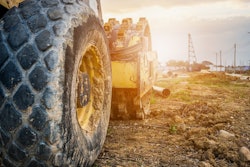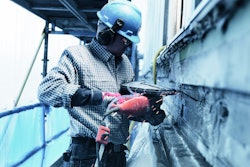
**Content brought to you in partnership with HomeTrust Bank.**
Contractors know how important it is to use the right tools for the job. The larger the project, the more critical it is to select the correct equipment to ensure the safety of the crew, increase productivity and efficiency of the job, and save money in the long run. Upgrading from manual labor to an excavator or backhoe-loader, for example, can shorten the project timeline by hours or days because the equipment makes short work of the tasks at hand.
On a big jobsite, there’s no substitute for heavy equipment and the work it can accomplish. Construction and industrial projects often require heavy equipment such as dump trucks, cranes, excavators, backhoe-loaders, dozers, wheel loaders and telehandlers. These machines can simplify complex projects and bring increased capabilities to the jobsite. They can also reduce labor needs and enable tasks to be completed in the safest manner.
These powerful machines are available in a variety of sizes and specifications, plus technology advances are creating more choices than ever before. When selecting equipment for a project, it’s important to consider the size of the jobsite, the tasks to be completed and any production capabilities necessary to complete the work. Heavy equipment should be a proper fit for the scope of the project, soil or material types and other geographical challenges, and needs to offer enough power to complete the tasks at hand.
 HomeTrust Bank
HomeTrust Bank
Finding a Financing Partner
For companies across the country who are purchasing equipment for their business, HomeTrust Bank’s Equipment Finance Division offers creative financing strategies.
HomeTrust Equipment Financing is available to manage tax and accounting issues, while offering flexible, tailored repayment plans and end of lease options. Equipment financing solutions include leases, commercial finance agreements and equipment loans for companies across the country.
Deciding Whether to Lease or Buy Heavy Equipment
Once it’s been decided what equipment is needed for a project, it’s time to determine whether to lease or buy it. Several factors should be taken into consideration when making this decision. Contractors need to keep in mind budgeting, financial risk, equipment lifespan, necessary training and how often the equipment will be required in the future.
Leasing can be an attractive choice with low initial costs and manageable monthly payments. Oftentimes, maintenance is included with heavy equipment leases, as are some tax benefits, making it a financially attractive option.
Owning heavy equipment comes with several benefits, especially if the machine will be used frequently over long periods. The equipment can be on site and available for use at any time, with no need to worry about returning it within a specific period. Workers can train and become accustomed to using it, increasing safety on the jobsite. Contractors build equity in the equipment over time, plus they can trade in or resell it at the end of its service life in their fleet, capturing added value. Plus, there are less obvious benefits to buying, such as tax write-offs and exemptions.
How to Buy Heavy Equipment
For those who choose to buy their heavy equipment, there are many ways to pay for it. It’s rare for a contractor to walk into an equipment dealership and buy a new machine with a briefcase full of cash. Some type of financing is typically used, whether it be from a manufacturer, dealer, bank or other means.
A heavy equipment loan allows contractors to buy machines on the spot. The equipment can be put immediately into use on projects and the loan is repaid over time.
When deciding the terms of a loan, lenders review a contractor’s cash on hand, business assets and capital, credit score, condition of the equipment to be financed and other details. Some loans finance the entire cost of the equipment, while others cover a portion. Financing may be structured to match the equipment’s useful life and can sometimes be paid on a seasonal basis.
Each lender offers differing terms. Some offer great rates, long lending terms, low interest rates or flexible financing. There are many outside financing lenders available throughout the country that offer competitive rates and terms.
Turn to HomeTrust Bank
HomeTrust Bank is one such lender. Its Equipment Finance Division offers creative financing strategies for contractors across the country seeking to purchase equipment for their business. The team provides the structure needed to manage tax and accounting issues, while offering flexible, customized repayment and end of lease options.
HomeTrust Bank’s equipment financing solutions include leases, commercial finance agreements and equipment loans. Contractors nationwide can receive the financing plan and terms that fit their individual business needs.



















